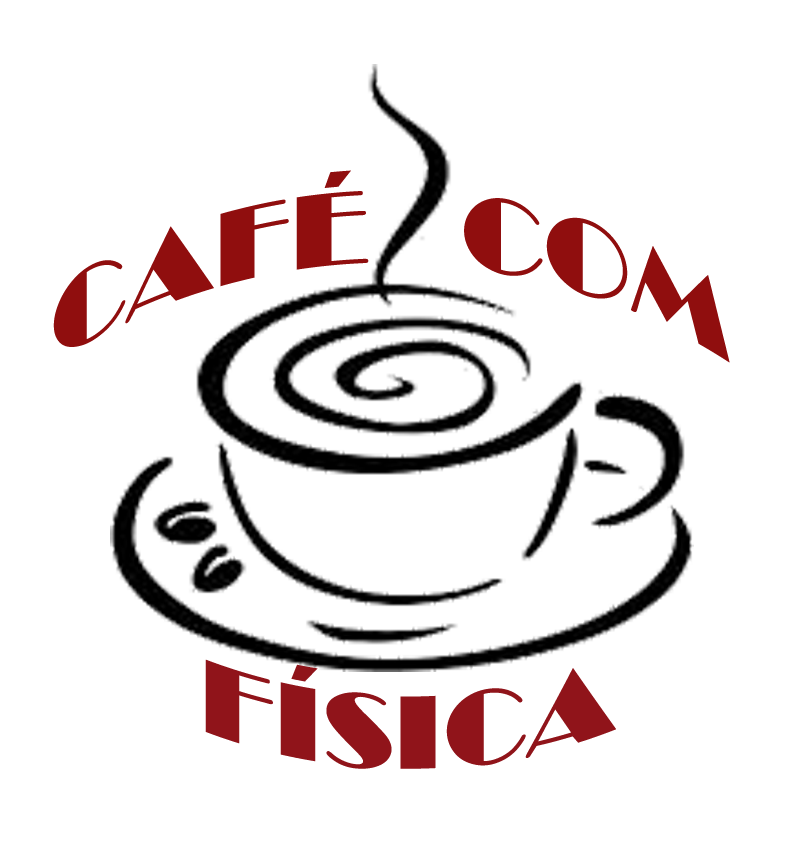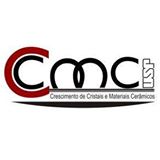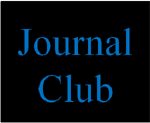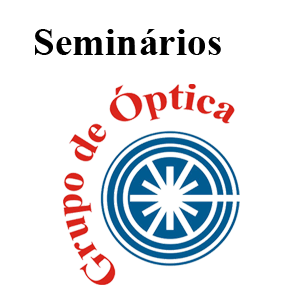 Initially in this talk, the fabrication of an all-printed and flexible biosensor for antioxidants will be described in order to illustrate the techniques and approaches explored by our group in the field of printed bioelectronics [1]. The research work comprised the following steps: i) formulation of an enzyme-containing bioink with both good printability in the large-area, roll-to-roll (R2R) compatible, rotogravure printing method, and preserved catalytic activity after printing; ii) deposition of sub-100 µm Au interdigitated electrodes by inkjet printing; iii) deposition of large-area, patterned, bioactive films onto flexible substrates (PET and PEN); iv) testing of the all-printed device in electrical impedance biosensing. In a second moment, results from two other projects will be discussed. The first project comprises the fabrication of flexible inkjet-printed Au circuits that were used as a biomedical device for the early detection of pressure ulcers on skin [2]. The second project is a current initiative from our group in which electronic components (printed resistor, capacitor and transistor) are being deposited exclusively by inkjet-printing. These components will be further combined to build more complex devices as inverters and (in the long-term) all-printed, low-cost, RFID tags. In general, the aim of the presentation is to illustrate capabilities and interest from the Bernhard Gross Polymer Group in the area of Printed (Bio)Electronics.
Initially in this talk, the fabrication of an all-printed and flexible biosensor for antioxidants will be described in order to illustrate the techniques and approaches explored by our group in the field of printed bioelectronics [1]. The research work comprised the following steps: i) formulation of an enzyme-containing bioink with both good printability in the large-area, roll-to-roll (R2R) compatible, rotogravure printing method, and preserved catalytic activity after printing; ii) deposition of sub-100 µm Au interdigitated electrodes by inkjet printing; iii) deposition of large-area, patterned, bioactive films onto flexible substrates (PET and PEN); iv) testing of the all-printed device in electrical impedance biosensing. In a second moment, results from two other projects will be discussed. The first project comprises the fabrication of flexible inkjet-printed Au circuits that were used as a biomedical device for the early detection of pressure ulcers on skin [2]. The second project is a current initiative from our group in which electronic components (printed resistor, capacitor and transistor) are being deposited exclusively by inkjet-printing. These components will be further combined to build more complex devices as inverters and (in the long-term) all-printed, low-cost, RFID tags. In general, the aim of the presentation is to illustrate capabilities and interest from the Bernhard Gross Polymer Group in the area of Printed (Bio)Electronics.
References
[1] PAVINATTO, F. J.; PASCHOAL, C. W. A.; ARIAS, A. C. Printed and flexible biosensor for antioxidants using interdigitated ink-jetted electrodes and gravure-deposited active layer. Biosensors and Bioelectronics, v. 67, p. 553-559, 2015.
[2] SWISHER, S. L, LIN, M. C.; LIAO, A.; LEEFLANG, E. J.; KHAN, Y.; PAVINATTO, F. J.; MANN, K.; NAUJOKAS, A.; YOUNG, D.; ROY, S.; HARRISON, M. R.; ARIAS, A. C.; SUBRAMANIAN, V.; MAHARBIZ, M. Impedance sensing device enables early detection of pressure ulcers in vivo. Nature Communications, Accepted for Publication, 2015.
 de Pesquisas da IBM no Brasil, nesses últimos cinco anos, como também irá descrever as áreas-foco do laboratório (recursos naturais, computação cognitiva, sistemas de engajamento e tecnologias industriais).
de Pesquisas da IBM no Brasil, nesses últimos cinco anos, como também irá descrever as áreas-foco do laboratório (recursos naturais, computação cognitiva, sistemas de engajamento e tecnologias industriais).



 Na palestra será discutida a história da instalação do centro de pesquisas da IBM no Brasil nesses últimos cinco anos como também serão descritas as áreas foco do laboratório (recursos naturais, computação cognitiva, sistemas de engajamento, e tecnologias industriais). Serão descritos brevemente os principais projetos nessas áreas (eg., inversão sísmica, analise de dados de media social, otimização estocástica aplicada a mineração, e nanotecnologia aplicada a recuperação de hidrocarbonetos). Também serão cobertos modelos de colaboração com empresas e universidades.
Na palestra será discutida a história da instalação do centro de pesquisas da IBM no Brasil nesses últimos cinco anos como também serão descritas as áreas foco do laboratório (recursos naturais, computação cognitiva, sistemas de engajamento, e tecnologias industriais). Serão descritos brevemente os principais projetos nessas áreas (eg., inversão sísmica, analise de dados de media social, otimização estocástica aplicada a mineração, e nanotecnologia aplicada a recuperação de hidrocarbonetos). Também serão cobertos modelos de colaboração com empresas e universidades. Initially in this talk, the fabrication of an all-printed and flexible biosensor for antioxidants will be described in order to illustrate the techniques and approaches explored by our group in the field of printed bioelectronics [1]. The research work comprised the following steps: i) formulation of an enzyme-containing bioink with both good printability in the large-area, roll-to-roll (R2R) compatible, rotogravure printing method, and preserved catalytic activity after printing; ii) deposition of sub-100 µm Au interdigitated electrodes by inkjet printing; iii) deposition of large-area, patterned, bioactive films onto flexible substrates (PET and PEN); iv) testing of the all-printed device in electrical impedance biosensing. In a second moment, results from two other projects will be discussed. The first project comprises the fabrication of flexible inkjet-printed Au circuits that were used as a biomedical device for the early detection of pressure ulcers on skin [2]. The second project is a current initiative from our group in which electronic components (printed resistor, capacitor and transistor) are being deposited exclusively by inkjet-printing. These components will be further combined to build more complex devices as inverters and (in the long-term) all-printed, low-cost, RFID tags. In general, the aim of the presentation is to illustrate capabilities and interest from the Bernhard Gross Polymer Group in the area of Printed (Bio)Electronics.
Initially in this talk, the fabrication of an all-printed and flexible biosensor for antioxidants will be described in order to illustrate the techniques and approaches explored by our group in the field of printed bioelectronics [1]. The research work comprised the following steps: i) formulation of an enzyme-containing bioink with both good printability in the large-area, roll-to-roll (R2R) compatible, rotogravure printing method, and preserved catalytic activity after printing; ii) deposition of sub-100 µm Au interdigitated electrodes by inkjet printing; iii) deposition of large-area, patterned, bioactive films onto flexible substrates (PET and PEN); iv) testing of the all-printed device in electrical impedance biosensing. In a second moment, results from two other projects will be discussed. The first project comprises the fabrication of flexible inkjet-printed Au circuits that were used as a biomedical device for the early detection of pressure ulcers on skin [2]. The second project is a current initiative from our group in which electronic components (printed resistor, capacitor and transistor) are being deposited exclusively by inkjet-printing. These components will be further combined to build more complex devices as inverters and (in the long-term) all-printed, low-cost, RFID tags. In general, the aim of the presentation is to illustrate capabilities and interest from the Bernhard Gross Polymer Group in the area of Printed (Bio)Electronics. Nanoscale science and technology has the potential to transform processes involving liquids in various industries. However, a combination of suitable experimental techniques and computational methods is needed in order to reveal the fundamentals of surface wetting phenomena at the nanoscale. Specifically, the understanding of liquid-solid interaction at the nanoscale is hoped to improve existing oil reservoir models up to the macroscale with potential benefits for enhanced oil recovery.
Nanoscale science and technology has the potential to transform processes involving liquids in various industries. However, a combination of suitable experimental techniques and computational methods is needed in order to reveal the fundamentals of surface wetting phenomena at the nanoscale. Specifically, the understanding of liquid-solid interaction at the nanoscale is hoped to improve existing oil reservoir models up to the macroscale with potential benefits for enhanced oil recovery. O desenvolvimento de nanoestruturas avançadas de óxidos metálicos semicondutores com capacidade de absorção de luz solar na faixa do espectro visível é uma das áreas da ciência que ganhou muita atenção nas duas últimas décadas. Isso se deve às expectativas que os óxidos metálicos vêm gerando na possibilidade de sua utilização na produção fotocatalítica de hidrogênio e na fabricação de células solares mais eficientes para a geração de energias renováveis. Em especial, a geração fotocatalítica de hidrogênio a partir da água, fotocatalisador semicondutor e energia solar, constitui um dos processos mais desafiadores e promissores para a geração de energia limpa da atualidade. O desenvolvimento de nanotubos de óxidos metálicos é muito atraente para as aplicações fotocatalíticas, uma vez que materiais com geometria 1D têm-se mostrado muito eficientes para o transporte de cargas sobre a superfície, quando comparados com materiais maciços “bulk” ou de geometria esférica. Além disso, o rendimento da produção fotocatalítica de H2 pode ser drasticamente aumentada quando se utiliza nanopartículas metálicas sobre a superfície dos óxidos metálicos como cocatalisadores da reação. Neste trabalho, os desafios e as perspectivas para a produção eficiente de H2 utilizando água, luz solar e nanotubos de óxidos metálicos serão abordados. A síntese de crescimento de nanotubos de óxidos metálicos por anodização e um método físico de deposição de nanopartículas “limpas” sem utilizar precursores orgânicos como agentes redutores ou estabilizadores serão discutidos.
O desenvolvimento de nanoestruturas avançadas de óxidos metálicos semicondutores com capacidade de absorção de luz solar na faixa do espectro visível é uma das áreas da ciência que ganhou muita atenção nas duas últimas décadas. Isso se deve às expectativas que os óxidos metálicos vêm gerando na possibilidade de sua utilização na produção fotocatalítica de hidrogênio e na fabricação de células solares mais eficientes para a geração de energias renováveis. Em especial, a geração fotocatalítica de hidrogênio a partir da água, fotocatalisador semicondutor e energia solar, constitui um dos processos mais desafiadores e promissores para a geração de energia limpa da atualidade. O desenvolvimento de nanotubos de óxidos metálicos é muito atraente para as aplicações fotocatalíticas, uma vez que materiais com geometria 1D têm-se mostrado muito eficientes para o transporte de cargas sobre a superfície, quando comparados com materiais maciços “bulk” ou de geometria esférica. Além disso, o rendimento da produção fotocatalítica de H2 pode ser drasticamente aumentada quando se utiliza nanopartículas metálicas sobre a superfície dos óxidos metálicos como cocatalisadores da reação. Neste trabalho, os desafios e as perspectivas para a produção eficiente de H2 utilizando água, luz solar e nanotubos de óxidos metálicos serão abordados. A síntese de crescimento de nanotubos de óxidos metálicos por anodização e um método físico de deposição de nanopartículas “limpas” sem utilizar precursores orgânicos como agentes redutores ou estabilizadores serão discutidos. Nonlinear microscopy (NLM) has emerged as a powerful technique for biological imaging in a label-free manner. Two-photon fluorescence imaging of neural activity, coherent Raman scattering imaging of lipid-rich assemblies, second-harmonic generation imaging of collagen structures and sensitive screening of pharmaceuticals, are just a few representative examples. Despite the tremendous impact of NLM, all of nonlinear imaging modalities can only image at shallow depths because deeper penetration imaging into biological specimens is hindered by scattering phenomena. In the first part of this presentation, and in order to present the current state-of-the-art nonlinear imaging capabilities, I will present a study of depolarization effects due to scattering on polarization-resolved coherent anti-Stokes Raman scattering imaging of opaque spinal cords myelin sheaths. The results highlight how scattering can lead to erratic conclusions and also how shallow nonlinear imaging is currently possible on biological specimens. I will then present how we used wavefront shaping (WS) technique to image through strongly scattering media in order to enhance the (imaging) penetration depth. After an explanation of WS fundamentals, I will show how we successfully imaged nonlinear sources of second-harmonic photons after strongly scattering medium, at a sub-diffraction limited resolution. These results demonstrate that nonlinear imaging deep in biological specimens is no longer limited to shallow depths.
Nonlinear microscopy (NLM) has emerged as a powerful technique for biological imaging in a label-free manner. Two-photon fluorescence imaging of neural activity, coherent Raman scattering imaging of lipid-rich assemblies, second-harmonic generation imaging of collagen structures and sensitive screening of pharmaceuticals, are just a few representative examples. Despite the tremendous impact of NLM, all of nonlinear imaging modalities can only image at shallow depths because deeper penetration imaging into biological specimens is hindered by scattering phenomena. In the first part of this presentation, and in order to present the current state-of-the-art nonlinear imaging capabilities, I will present a study of depolarization effects due to scattering on polarization-resolved coherent anti-Stokes Raman scattering imaging of opaque spinal cords myelin sheaths. The results highlight how scattering can lead to erratic conclusions and also how shallow nonlinear imaging is currently possible on biological specimens. I will then present how we used wavefront shaping (WS) technique to image through strongly scattering media in order to enhance the (imaging) penetration depth. After an explanation of WS fundamentals, I will show how we successfully imaged nonlinear sources of second-harmonic photons after strongly scattering medium, at a sub-diffraction limited resolution. These results demonstrate that nonlinear imaging deep in biological specimens is no longer limited to shallow depths. very different physical origin, such as the Quantum Hall Effect (QHE), the topological insulators (TI) and the quantum spin liquids (QSL). Because of the differences, it is at first glance hard to see any relation between these states, giving the appearance that the branch of topological condensed mater theory is completely fragmented. In spite of that some connections were recently found between the QHE, TIs and QSLs, opening new guidances to look for models that support topological phases. In this seminar, such connections will be introduced. The focus will be on a correspondence between a modified Kitaev honeycomb model and the Haldane model and on 3D strongly correlated systems in the strong spin-orbit regime. The first case inspired the generation of tight-binding models that supports either a QSL or a TI phase, establishing a method of generating certain types of desired states. In the second case, we review the research into systems that have a combination of the key elements for the generation of topologically non-trivial phases.
very different physical origin, such as the Quantum Hall Effect (QHE), the topological insulators (TI) and the quantum spin liquids (QSL). Because of the differences, it is at first glance hard to see any relation between these states, giving the appearance that the branch of topological condensed mater theory is completely fragmented. In spite of that some connections were recently found between the QHE, TIs and QSLs, opening new guidances to look for models that support topological phases. In this seminar, such connections will be introduced. The focus will be on a correspondence between a modified Kitaev honeycomb model and the Haldane model and on 3D strongly correlated systems in the strong spin-orbit regime. The first case inspired the generation of tight-binding models that supports either a QSL or a TI phase, establishing a method of generating certain types of desired states. In the second case, we review the research into systems that have a combination of the key elements for the generation of topologically non-trivial phases. Photodynamic therapy (PDT) relies on the interaction between light, oxygen and a photosensitive chemical: Protoporphyrin IX (PpIX). Louise will talk about the current study being performed at Hospital Amaral Carvalho in Jahu city, where the build up of PpIX in different skin lesions is measured using the fluorescence signal produced by the drug. The research will help to gain more understanding of the kinetics and dynamics of the PDT treatment process as well as help to generate more accurate computer models. Initial results show that the PpIX builds up in the lesion linearly with time over the 3 hours of occlusive treatment.
Photodynamic therapy (PDT) relies on the interaction between light, oxygen and a photosensitive chemical: Protoporphyrin IX (PpIX). Louise will talk about the current study being performed at Hospital Amaral Carvalho in Jahu city, where the build up of PpIX in different skin lesions is measured using the fluorescence signal produced by the drug. The research will help to gain more understanding of the kinetics and dynamics of the PDT treatment process as well as help to generate more accurate computer models. Initial results show that the PpIX builds up in the lesion linearly with time over the 3 hours of occlusive treatment. We study the effect of strong spin-orbit coupling on bound states induced by impurities in superconductors. The presence of spin-orbit coupling breaks the SU(2)-spin symmetry and causes the superconducting order parameter to have generically both singlet (s-wave) and triplet (p-wave) components. As a result, impurity induced bound states corresponding to different angular momentum channels hybridize and display a number of qualitatively different features from that of the well-known Yu-Shiba-Rusinov states in conventional s-wave superconductors. In particular, we find that in the presence of spin-orbit coupling the spectrum of the impurity induced bound states depends on the orientation of the magnetic moment of the impurity. Our predictions can be used to distinguish the symmetry of the order parameter and have implications for the Majorana proposals based on chains of magnetic atoms placed on the surface of superconductors with strong spin-orbit coupling [1].
We study the effect of strong spin-orbit coupling on bound states induced by impurities in superconductors. The presence of spin-orbit coupling breaks the SU(2)-spin symmetry and causes the superconducting order parameter to have generically both singlet (s-wave) and triplet (p-wave) components. As a result, impurity induced bound states corresponding to different angular momentum channels hybridize and display a number of qualitatively different features from that of the well-known Yu-Shiba-Rusinov states in conventional s-wave superconductors. In particular, we find that in the presence of spin-orbit coupling the spectrum of the impurity induced bound states depends on the orientation of the magnetic moment of the impurity. Our predictions can be used to distinguish the symmetry of the order parameter and have implications for the Majorana proposals based on chains of magnetic atoms placed on the surface of superconductors with strong spin-orbit coupling [1].